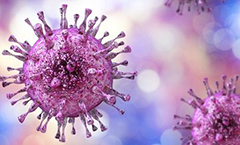Introduce:
Urinary tract infection, as the name implies, refers to infection of any part of the urinary tract, such as the urethra, bladder, ureter, or kidney, accompanied by symptoms. Urinary tract infection is usually an ascending infection, and the urethra is a common site of primary infection that causes urethritis. Fecal contamination or sepsis that spreads through the urethra occurs. In most cases, bacteria from feces and skin enter the urethral opening, and then the infection rises to the bladder (cystitis), where the bacteria multiply to form colonies and cause inflammation, leading to irritation, polyuria (frequent urination), and urinary tract infections And other symptoms. Urgency, fever and pain. The infection can spread to the ureters, from there to the kidneys (pyelonephritis), and then eventually to the bloodstream, leading to sepsis and chronic renal failure. Infection can also start in the kidneys, where kidney stones (kidney stones) are the focus of infection. Because the urethra is short and close to the urethra, vagina, and rectum, women are more susceptible to urinary tract infections. Due to increased susceptibility, 50-60% of women have experienced at least one urinary tract infection in their lifetime. Lower urinary tract infections are limited to the urethra and bladder, while upper urinary tract infections involve the kidneys. UTI may be complicated (in pregnancy, diabetes, or weakened immune function) or uncomplicated if it does not meet the criteria (the infection usually resolves spontaneously). Urinary tract infections are caused by a variety of pathogens, including bacteria, fungi, and viruses. Bacterial urinary tract infections are most commonly caused by E. coli, while viral infections are rare. Parasites such as worms and Schistosoma mansoni are responsible for recurrent urinary tract infections and bacterial co-infections. The diagnosis is made based on clinical characteristics, urine culture, and sensitivity.
Signs and Symptoms That Indicate You May Have UTI:

Patients with upper and lower urinary tract infections show some similar clinical features, such as frequent urination, urgency, and pain. Here are some other signs and symptoms, some of which are common for upper and lower urinary tract infections:
1. Frequent urination, urgency, and dysuria (dysuria) are common in upper and lower urinary tract infections.
2. More than 100,000 colony forming units
3. The result of urinalysis is cloudy
4. Alkaline urine with ammonia smell (Proteus mirabilis)
5. Burning sensation when urinating (urethritis)
6. Urinary incontinence (loss of bladder control), blood in the urine and pelvic pressure (cystitis)
7. Cystitis is manifested as suprapubic pain, and pyelonephritis is manifested as low back pain
8. Fever, urinary white blood cell cast, fever and leukocytosis, nausea and vomiting often occur in pyelonephritis.
9. Hypertension and chronic renal failure caused by chronic pyelonephritis
10. Sepsis (blood infection) causes sepsis (systemic inflammation), leads to meningitis, and has fatal consequences.
The Important Reasons for UTI that Everyone Must Know:
There are many kinds of microorganisms that cause urinary tract infections. Urinary tract infection is the most common human infection. Due to risk factors such as unprotected intercourse, indwelling catheters, urinary tract obstruction, and immunocompromised states (such as acquired immunodeficiency syndrome (AIDS) and pregnancy), its incidence has always been On the rise. The following pathogens are the cause of UTI:
1. Bacteria
(i) Escherichia coli (the most common cause of UTI in general)
(ii) Klebsiella
(iii) Pseudomonas aeruginosa
(iv) Enterococcus faecalis
(v) Saccharomyces cerevisiae
2. Fungi
(i) Candida (the most common cause of fungal urinary tract infections)
(ii) Aspergillus
(iii) Cryptococcus neoformans
3. Viruses
(i) Cytomegalovirus

(ii) BK virus
(iii) Adenovirus
4. Parasites
(i) Trichomonas vaginalis (protozoa)
(ii) Wuchereria bancrofti (nematode)
(iii) Schistosoma mansoni (fluke/Schistosoma)
(iv) Leishmania (protozoa)
(v) Worms (nematodes)
How Do We Manage UTI:
Antibiotics are the most commonly used treatment for UTI because bacterial UTI dominates. Treatment lasts from 3 days to 6 weeks and includes antibiotics such as nitrofurantoin, nalidixic acid fluoroquinolones (ciprofloxacin, ofloxacin, and levofloxacin), sulfamethoxazole/trimethoprim, cephalosporins (ceftriax) Pine and cephalexin) and a single dose of fosfomycin. Fluconazole and amphotericin B work well in fungal cases. Cidofovir is the drug of choice for viral urinary tract infections. Antihelmintics such as albendazole, mebendazole and pyran benzoate are used to treat helminth infections. Drinking a lot of water can remove parasites and kidney stones, which may prolong the infection time, and cranberry juice can prevent bacteria from sticking to the bladder wall. Non-steroidal anti-inflammatory drugs such as diclofenac are used as supportive treatment to combat pain and reduce the use of antibiotics.




